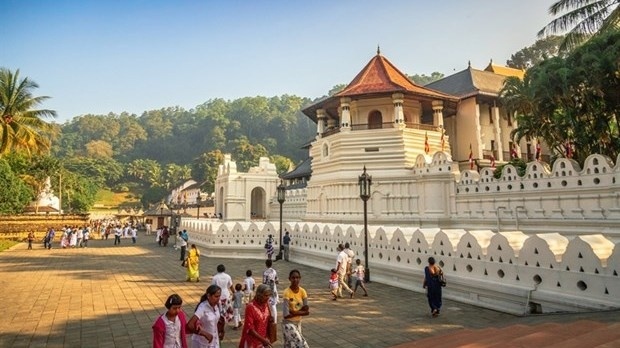Sri Lanka is an island country in South Asia, dubbed the “Pearl of the Indian Ocean”, with a maritime route connecting West Asia and South Asia. The country is famous for producing and exporting tea, coffee, rubber, and coconuts. The natural beauty of its tropical forests, beaches and cultural heritage make the country a popular tourist attraction.
Five out of seven sites of Sri Lanka that have been inscribed in the UNESCO World Heritage are temples built more than 2,000 years ago but still retain their ancient architecture and appearance. Among them, the ancient citadel of Anuradhapura, which is 210km from Colombo capital city, is a popular tourist destination.
Madubhani Pereva, Acting Managing Director of the Sri Lanka Tourism Promotion Bureau, said that the country’s tourism does not only attractive for the ancient Buddhist relics, but for its beautiful wild nature. Sri Lanka is home to many rare animals and plants as well as many high-end services.
The country is promoting the development of ecotourism to explore nature, adventure tours, and sports tourism, she said adding that the world-famous windsurfing sport attracted thousands of athletes and tourists.
Although the number of Vietnamese visiting Sri Lanka has been on the rise in recent years, it is modest compared with other markets, Pereva said. As many as 3,200 Vietnamese tourists arrived in Sri Lanka in 2018.
According to Vietnamese travel agencies, one of the difficulties when accessing the Sri Lankan tourism market is that little tourism information from Sri Lanka is available. In addition, there is no direct flight between Sri Lanka and Vietnam.
Currently, Sri Lanka has reopened its border to international visitors. According to the Sri Lankan Embassy in Vietnam, information on tourism activities as well as visa policies, activities, and requirements for safe international arrival have been posted on the embassy’s website.
With an effort to connect tourism, Vietnamese travel agencies hope that in the coming time, they will be able to build a new tourism market for Vietnamese tourists to explore after the end of the COVID-19 pandemic.




